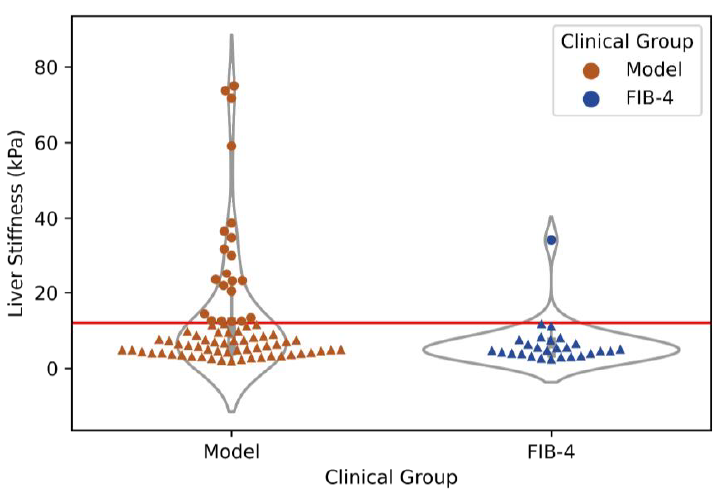Liver cirrhosis often goes undiagnosed until advanced stages, despite being a major global health burden. This technology introduces a machine learning–based algorithm that analyzes routine blood tests from electronic health records (EHR) to predict cirrhosis risk up to five years in advance. Designed for population-wide use, the model enables earlier, cost-effective detection and prioritization for follow-up testing, potentially improving patient outcomes and easing healthcare system burdens.
- Population-wide screening system for liver cirrhosis diagnosis within healthcare organization systems for early intervention
- Prioritization of individuals for transient elastography (TE)
- Support for preventive measures such as lifestyle modification or early treatment to reduce the risk of liver cirrhosis
- Outperforms the gold-standard FIB-4 in both retrospective (AUC 0.79 vs. 0.60) and prospective validation (True Positive Rate 27.6% vs. 3.7%)
- Trained on over 5.5M real-world EHR records spanning 19 years
- High accuracy despite missing data
- Enables continuous, low-cost, non-invasive screening without additional data collection.
Validated retrospectively on a national cohort and prospectively in a blinded clinical study; further evaluation in larger prospective cohorts is planned to assess cost-effectiveness.

Prospective cohort results: Liver stiffness (via TE test) was measured in individuals referred to the clinic based on high model risk scores (orange, left) or high FIB-4 scores (blue, right). Cirrhosis cutoff: >12 kPa (red line). Cirrhotic individuals are shown as circles; non-cirrhotic as triangles.


